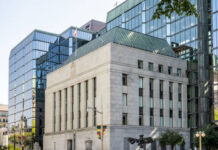U.S. non-farm payrolls rose 157k in July, below market expectations. However, the disappointment is mitigated by the fact that upward revisions added 59k new jobs to the previous two months results.
The unemployment rate edged back down to 3.9%. The labor force participation rate held on to its June gain, remaining at 62.9% in July.
Perhaps the most encouraging sign of labor market strength is that core working-age individuals continue to be drawn back into the labor force. The participation rate for core age workers (25-54 yrs) rose a tick to 82.1% in July, continuing the improving trend seen over the past three years.
July’s hiring slowdown was concentrated in the services sector, which added 118k new jobs, down from 182k in June. Strength was seen in business services (+51k), and health care and social assistance (+34k), food services and drinking places (+26k), and even the retail sector managed a 7k job gain.
In comparison, goods sector hiring held up well in July, rising 52k positions. Manufacturing added 37k new jobs, continuing a steady string of gains. Construction added 19k positions, up from June, while mining lost 4k jobs.
Average hourly earnings rose 0.3% in July, as expected. On a year-on-year basis, growth in wages remained steady at 2.7%.
Key Implications
After a couple of very strong months for hiring, and the unemployment rate returning to its cycle low, there is really nothing to panic about in a slowdown in hiring. July marks the 94th month of consecutive job gains, the longest continuous stretch since records began. With such a hot job market over a long period, it is becoming increasingly difficult to find workers to fill positions, which would be expected to result in a natural slowing in monthly job gains.
A 3.9% unemployment rate, and a rise in labor force participation for core-aged individuals drives home the continued strength in the labor market. Monthly wage growth was on expectations, with the year-on-year growth rate staying steady at 2.7%. With continued improvement in the participation rate and wage gains not yet showing signs of acceleration, the Fed can continue to be patient in raising rates. We expect the Fed to continue its steady interest rate increases in September.














